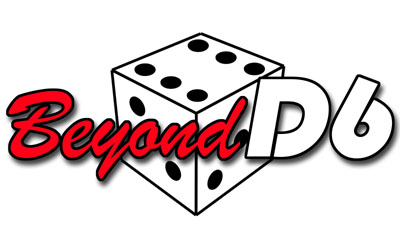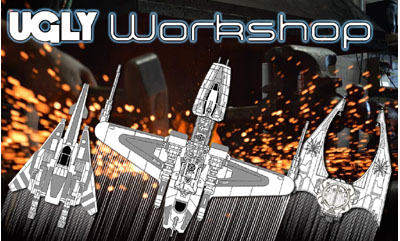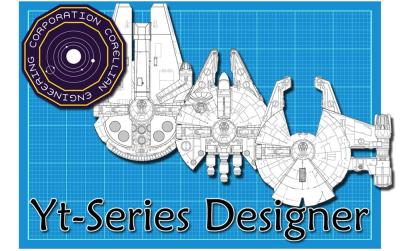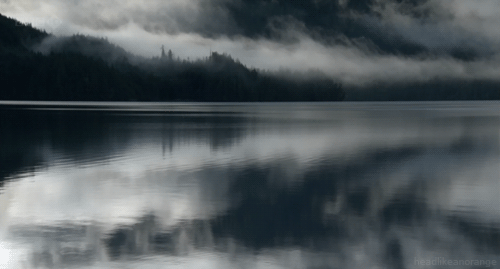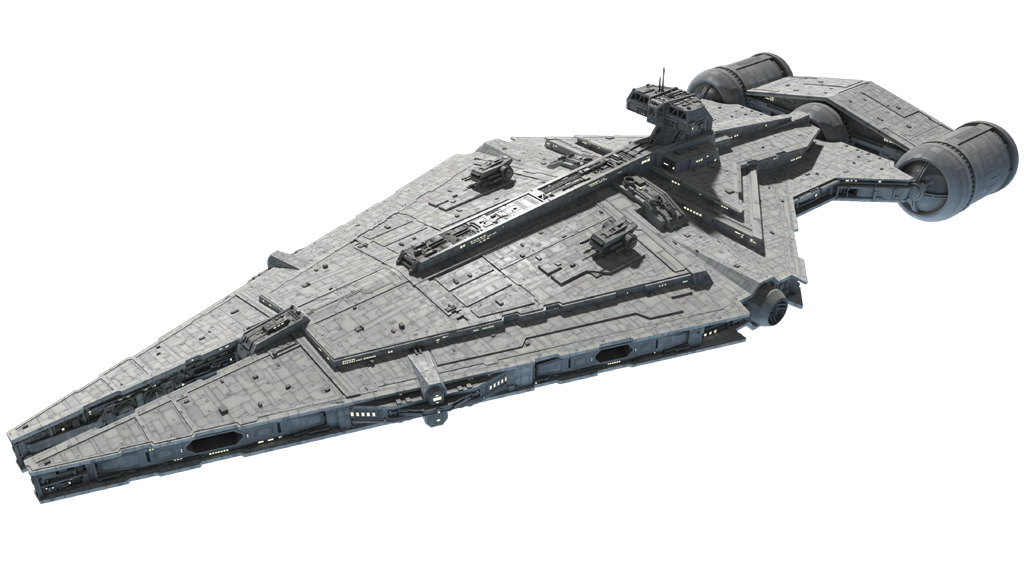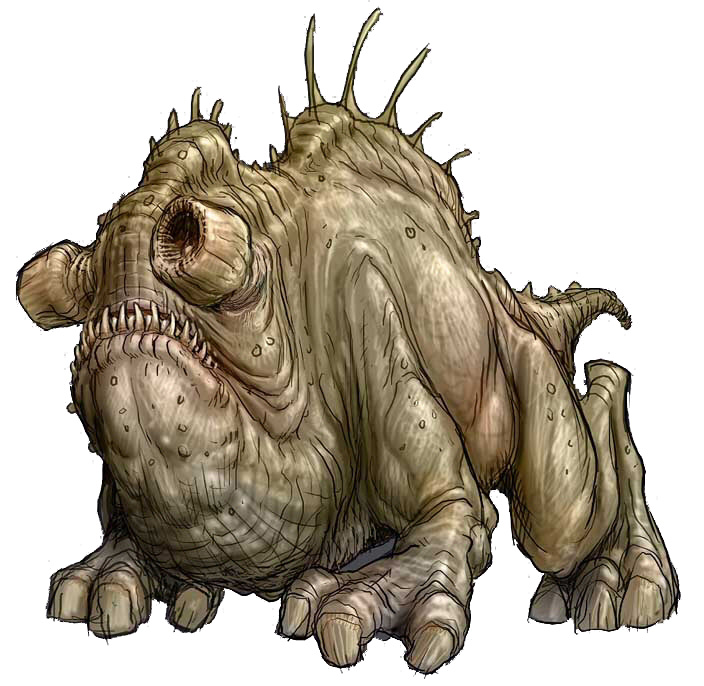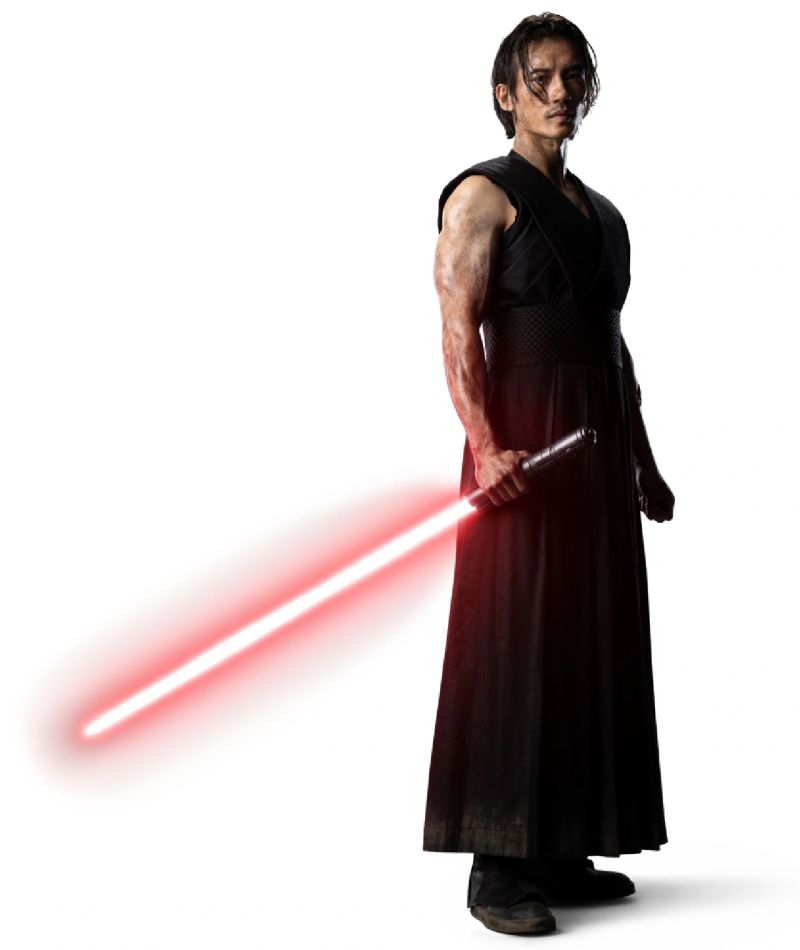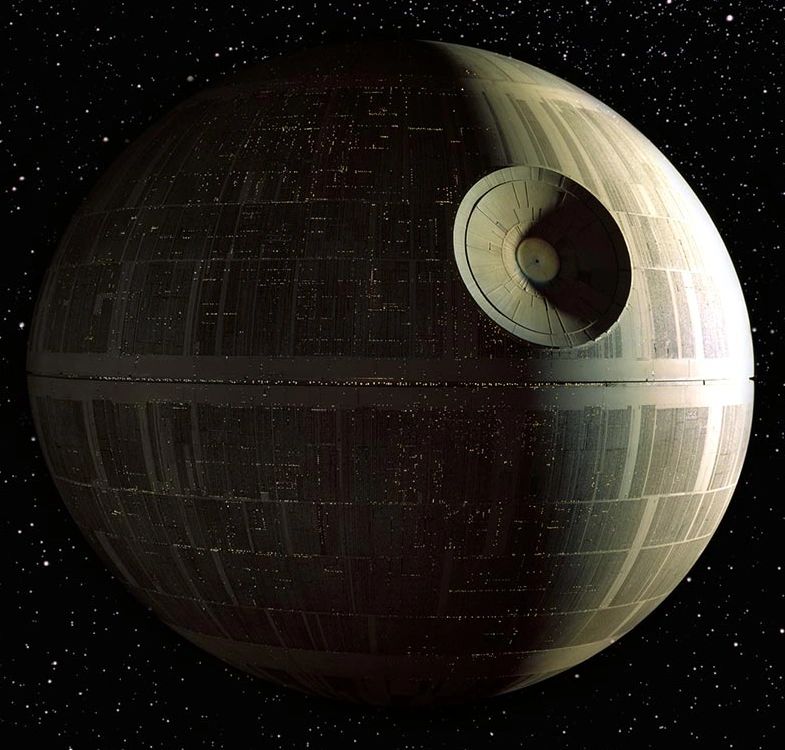 Name: Imperial Department of Military Research / Sienar Fleet Systems DS-1 Orbital Battle Station
Type: Deep space mobile battle station
Scale: Death Star
Length: 120 kilometers
Width: 120 kilometers
Height: 120 kilometers
Skill: Battle station piloting: Death Star
Crew
Full-time crew members (342,953)
Officers (27,048)
Troops (607,360)
Pilots (167,216)
Support and maintenance crew (285,675)
Support droids (400,000)
Stormtroopers (25,984; depending upon deployment)
Gunners (57,278)
Starship support staff (42,782)
Passengers (843,342)
Skeleton 56914/+15.
Crew Skill: Astrogation 5D+1, battle station piloting 6D, capital ship gunnery 5D.
Passengers: 607360 (troops), 25984 (stormtroopers), 42782 (starship support staff), 167216 (support ship pilots and crew)
Cargo Capacity: Over one million kilotons.
Consumables: 3 years.
Cost: At least 1,500,000,000,000 credits
Hyperdrive Multiplier: x4
Hyperdrive Backup: x20
Nav Computer: Yes
Space: 1
Hull: 15D
Shields: 2D
Sensors:
Passive: 250/0D
Scan: 1000/1D
Search: 5000/2D+2
Focus: 40/4D
Weapons:
Concave Dish Composite Beam Superlaser (1)
Fire Arc: Forward
Crew: 168, skeleton 48/+10
Scale: Death Star
Skill: Capital ship gunnery: superlaser
Body: 12D (capital scale)
Space Range: 1-20/40/100
Damage: 2D to 16D (1/4, 1/2, 3/4, or maximum power)
5000 D6 Turbolaser Batteries
Fire Arc: Turret
Crew: 3
Scale: Capital
Skill: Capital ship gunnery
Body: 3D (capital scale)
Fire Control: 1D
Space Range: 1-5/10/15
Damage: 5D
5000 XX-9 Heavy Turbolasers
Fire Arc: Turret
Crew: 4
Scale: Capital
Skill: Capital ship gunnery
Body: 4D (capital scale)
Fire Control: 1D
Space Range: 1-7/15/30
Damage: 7D
2500 SB-920 Laser Cannons
Fire Arc: Turret
Crew: 3
Scale: Capital
Skill: Capital ship gunnery
Body: 4D (capital scale)
Fire Control: 1D
Space Range: 1-5/10/15
Damage: 7D
2500 MS-1 Ion Cannons
Fire Arc: Turret
Crew: 4
Scale: Captial
Skill: Capital ship gunnery
Body: 4D (capital scale)
Fire Control: 1D
Space Range: 1-3/7/10
Damage: 4D
768 Modified Q7 Tractor Beam Projectors
Fire Arc: Turret
Crew: 6
Scale: Capital
Skill: Capital ship gunnery
Body: 5D (capital scale)
Fire Control: 3D
Space Range: 1-5/10/25
Damage: 5D
Complement:
Starfighters (7,000)
Strike cruisers (4)
Assault shuttles (3,600)
AT-ATs (1,400)
AT-STs (1,400)
Dropships (1,860)
Game Notes:
Power: The Death Star’s power systems can generate 2D of damage per hour. The Death Star’s superlaser can fire at 1/4 power to destroy a city, 1/2 power to destroy a small moon or ship, 3/4 power to destroy a planetary shield or Medium size planet, or maximum power to destroy a large planet.
Size: Due to the immense size of the Death Star, it is divided into 24 distinct zones, each equally equipped with weapons. Only weapons within the specific zone adjacent to an attacking ship can be brought to bear at any given time; often, the actual number of weapons that can be brought to bear is significantly lower.
Description: The DS-1 Orbital Battle Station, better known as the Death Star or Death Star I, and known to the public as the Imperial Planetary Ore Extractor, was a massive Imperial battlestation/superweapon with a diameter of 120 kilometers designed to enforce law and order throughout the Empire with the threat of planetary destruction.
It started off as the Separatist Ultimate Weapon before becoming the Expeditionary Battle Planetoid Development Initiative or Project Death Star after it ceased to be a Separatist project and became an Imperial one in 19 BBY. The Death Star was destroyed by Luke Skywalker during the Battle of Yavin.
Design
The basic structure of the station was a sphere the size of a small class-IV moon, with a kilometer-wide trench containing docking bays running around its equator. It was the very incarnation of the Tarkin Doctrine. Because of its size and shape, it was sometimes mistaken for a small moon.
The first Death Star, like its successor, was divided into two hemispheres, each subdivided into 12 bridge-controlled zones. The northern hemisphere held the main armament of the station, a fearsome superlaser. This weapon had the external appearance of a bowl many kilometers wide. When activated, eight separate beams were each activated by a crystal through the particle accelerator tubes, amplified through rings, and conjoined to form one of eight separate beams that would converge outside the dish, focusing into a point to form a single incredibly powerful superlaser beam. The power settings of the superlaser were adjustable, allowing for the destruction of naval vessels and planets alike. Blasts with the power to destroy naval vessels could be fired roughly once every minute, while planet-destroying blasts could only be fired once per day. This superlaser was powerful enough to destroy even a shielded planet with a single shot.
The Death Star was said to comprise eighty-four separate internal levels, stacked south to north. Each level was separated into 257 sub-levels. A nominal number of sub-levels were then to be stacked around the surface of the sphere, encompassing the inner stacked levels. A number of the Death Star's docking bays were reserved as executive docking bays for high-ranking personnel, featuring larger facilities and more significant defenses.
Facilities included parks, shops, and other amenities for the Human crew, as well as numerous infrastructure necessities such as trash compactors, like Garbage Compactor 3263827. The entire hull of the planetoid was covered in quadanium steel.
The battlestation had two massive sublight engines in the midsection and a formidable hyperdrive system. Driven by 123 individual generators tied to one navigational matrix, the Class 4 hyperdrive was fast enough to allow the Death Star to travel thousands of light-years from Alderaan to Yavin IV in only a few hours. All engineers working near the highly radioactive engines wore radiation suits to minimize harmful exposure. Grand Moff Wilhuff Tarkin once likened walking inside the Death Star to walking inside the Caves of Corips, but with illuminated tubing and plastisteel replacing the natural surroundings.
Near the northern pole, a hundred-meter tower was constructed and shielded to near impenetrability for the Emperor to use as personal quarters while on board. Operational command of the space station took place from the overbridge, which included the conference room. A high-speed shuttle system was reserved for officers to traverse the station quickly.
The Death Star's design included a small but significant flaw: an exposed thermal exhaust port. At one point in the construction process, this exhaust port was identified as unnecessary. When the architect responsible for the area asked the Wookiee overseeing construction of the area to omit the port, he insisted on getting the amendment to the plans in writing. Before the architect had a chance to submit such an amendment, the Wookiee became ill and was confined to a medcenter, and his replacement built the port as specified in the plans. The port was two meters wide, approximately the size of a womp rat; lay at the end of a large trench in the hull of the battle station; and was ray shielded against energy weapons such as laser cannons.
Armaments and defensive systems
As impressive as the Death Star's design was, its armament and defensive measures were also extensive. Its primary weapon was its Concave Dish Composite Beam Superlaser, which Bevel Lemelisk had included in the final design. Although Tarkin had initially intended for the Death Star's weapon to "rock a [targeted] world to its very core," the final superlaser design was capable of shattering worlds, leaving behind only asteroid ruins. There were also plans for installing a composite beam superlaser as an alternative due to the challenges of building an operational, single-beam superlaser, which required a mechanical arm to move it into place, although the plans were scrapped when the engineers resolved the technical difficulties of the planet-shattering superlaser.
The entirety of the Death Star's spherical design, including the majority of its interior volume, was dedicated to the support and maintenance of the superlaser. The diameter of the superlaser cannon well was approximately 35 kilometers. The energy for the superweapon originated from deep within the battle station, and was channeled into an array of eight initiator laser cannons. The eight laser cannons, via tributary beams, then converged into a central nexus point above the cannon well to form a powerful single beam. The superlaser likewise required eight superlaser firing stations: four primary stations plus four backups in case one of the stations failed. The superlaser was dangerous even to itself, so various safeguards were implemented to prevent the battlestation from being consumed by its own power, with several being resolved via Project Hammertong. One of these were the tributary beam shafts, with eight lining the circumference of the superlaser weapon. The tributary beam shafts, originally meant for Hammertong, were constructed at Desolation Station. Focusing coils also lined the tributary shafts to maintain the beams' integrity. The tributary beams had to be perfectly calibrated and aligned; otherwise, the central beam would misfocus and dissipate, resulting in a flurry of backscatter that could severely damage or even destroy the superlaser housing. The firing process generated magnetic fields and gravitational flux, necessitating their dissipation to prevent the amplification crystals from becoming misaligned and the battle station from tearing apart.
The superlaser could be set to varying power levels, with one power level sufficient to use against enemy ships. At full power, the superlaser required a standard day (24 hours) to recharge, while usage of the superlaser against spaceborne vessels only required a minute of recharging.
A downside to the presence of the superlaser was that the Death Star had to forgo all but the most rudimentary shielding capabilities in order to achieve such destructive power. However, its surface-to-air defenses were sufficient to make up for its lack of efficient shielding. It possessed 5,000 Taim & Bak XX-9 heavy turbolasers, 2,500 Borstel Galactic Defense MS-1 ion cannons, 2,500 Borstel Galactic Defense SB-920 laser cannons, and 5,000 Taim & Bak D6 turbolaser batteries that acted as its surface-to-air defenses. The SB-920 batteries were largely congregated around the Death Star's trenches, were powerful enough to destroy starfighters with a single shot, and utilized an advanced Target Acquisition and Targeting (TAT) system similar to that of certain Imperial surface-to-air defense systems. The XX-9 heavy turbolasers used on the Death Star were variants that had four sections and were overall larger. To ensure the turrets didn't cause friendly fire and to deter hijackers from attacking their posts, a safety mechanism automatically locked them up when any part of the Death Star was within their sights, making them disadvantageous against starfighters. Besides defense, the turbolaser batteries acted as directional markers for TIE fighter pilots.
Shield-projection towers on the Death Star's surface emitted energy fields that covered the Death Star's city sprawls, protecting them from space debris as well as providing limited defense against energy weapons, due to most of the Death Star's energy reserves being harnessed for the superlaser. At least three shield-projection towers were necessary for a city sprawl, with their power cells, machinery, and shield-operator stations located at the bases of the towers. In addition, they were highly concentrated around the tower containing the Emperor's throne room, for obvious reasons. Shield operation fell under the jurisdiction of Battle Station Operations, with various officers, operators, and technicians tasked with manning the shield-projection towers' stations to ensure that the shields were always in full working order. During battle, the shields of neighboring sprawls could overlap to create a continuous blanket of energy over the surface.
The battlestation also had field generators, which included a jamming field that affected every sensor of enemy ships except sight, and could create distortion potent enough to reduce the maneuverability of starfighters to less than point three, at least along the meridian trench housing the thermal exhaust port.
The Death Star's hull plating was made of military-grade Quadanium steel, most of which had been drawn and processed from asteroidal metal. Because of the challenges of not only creating the material necessary, but also producing enough to install the plating onto the station, several sections of the Death Star were pressurized during the installation of the hull for efficiency purposes, such as storage space for supplies during construction as well as temporary habitats for laborers. The Death Star's hull from a distance appeared relatively smooth to the naked eye.
The Death Star had 768 modified Phylon Q7 tractor beam projectors, of which 24 were assigned for each zone of the Death Star. The projectors in each zone could concentrate one or all of their tractor beams onto a single target from a significant enough distance to ensnare distant enemy ships in a virtually unbreakable energy bubble, and were powerful enough to capture the vessels long before the vessels' sensors could identify it as a battle station instead of a small moon. Each required a crew of ten to operate, and was coupled to the main reactor to prevent accidents caused by generator malfunctions. There were seven power coupling terminals in all, identified atop a 35-kilometer-tall generator tower, and providing energy for more than 700 tractor beams. However, disabling even one of the coupling sites from the main reactor would result in the tractor beam becoming inoperative.
Aside from the outer defenses and armaments on the surface of the station, the inner areas of the station also provided a significant amount of security measures as well, including metallic spikes (which were directly inspired by the stalagmite-filled pits within the various cavern networks on Tatooine), BlasTech Class VI automated laser projectors, which were linked by security cameras, and IT-O interrogator droids, which sometimes acted as defensive systems against intruders.
It also had access to 11,000 combat vehicles, as well as more than 7,000 TIE fighters, shuttles, and other craft.
Overall, the Death Star's firepower was such that Jan Dodonna speculated that it rivaled half the Imperial Navy.
Command structure
Owing to the rigid command structure of various Imperial organizations, the Death Star's command structure, known as command sectors, was just as rigid.
The battle station was under the direct command of Grand Moff Wilhuff Tarkin. Below him was a triumvirate composed of Army Command, Naval Command, and Battle Station Command, represented by High General Cassio Tagge, Admiral Conan Antonio Motti, and General Hurst Romodi, respectively, although when the Galactic Emperor made visits, his authority superseded theirs. Below them were the Operations Chiefs for the Army, Navy and Battle Station Operations, all of whom were held by officers with the rank of colonel. Below each Operations Chief, there were eight majors, each representing specific departments under their branch of operations, alongside four majors tasked with the general, service, technical, security, and military sectors (the last including Army troopers, the Death Star troopers [a subset of the Imperial Navy troopers], gunners, and TIE pilots). Lastly, lieutenants were tasked with supervising the command sectors and were the lowest-ranked officers to do so, relegated to Command sector duty posts.
The only exceptions to the command structure were members of the Stormtrooper Corps, and the Emperor's emissary Lord Darth Vader, the latter of whom answered to Grand Moff Tarkin alone. Members of the Army and Navy portions of the Death Star could call upon the stormtroopers' services if necessary, although with the firm understanding that they fell under neither jurisdiction and were to obey the Emperor alone.
History
Creation of the "Battle Planetoid" concept
The concept for the Death Star could be found in its precursor, the "Expeditionary Battle Planetoid." Raith Sienar came up with the concept in 29 BBY, around the time of the Second Battle of Zonama Sekot. Sienar made concept designs of the Battle Planetoid: It had a main sphere and two smaller spheres, the smaller spheres connected to the main sphere by poles. It used massive turbolasers and was powered by an internal plasma implosion core more than a kilometer wide. Unlike its Death Star descendant, it lacked a superlaser, as it was designed for space combat.
Raith showed the designs to the commander of the Republic Outland Regions Security Force, Wilhuff Tarkin. Tarkin was interested in the concept. He later betrayed Sienar when he showed the concept to Supreme Chancellor Palpatine and claimed that he had invented it. Sienar was unperturbed, however, as he had already lost interest in the design.
Separatist beginnings
The initial technical design of the Death Star, known at the time as the "Ultimate Weapon," was created by the Geonosian Industries and called for a spheroid battle station capable of destroying Galactic Republic forces and planets under their control.
In 22 BBY, Poggle the Lesser, leader of the Geonosians, returned the top-secret design to Count Dooku to prevent it from falling into the hands of the Jedi during the Battle of Geonosis. Dooku took the designs back to Coruscant and gave them to Darth Sidious, his dark master. These plans would later be fused with Wilhuff Tarkin and Raith Sienar's vision of an Expeditionary Battle Planetoid.
During the Clone Wars, Sidious ordered Geonosian builders to begin construction on the station over their own homeworld. Hundreds of thousands of workers were busy building the station throughout the war. Around five months after the Battle of Geonosis, Dooku briefly considered halting production of the Weapon in favor of the Planet Killer, but changed his mind after the demonstration failed, thanks to sabotage by Mace Windu. 17 months after the start of the war, Geonosian technicians on Zaadja were observed working on the Weapon's design.
In 19 BBY, Supreme Chancellor Palpatine sent the 501st Legion on a mission to Mygeeto where they were to collect an energy sample that would be used in the station's superlaser of the soon to be formed Galactic Empire. During the last few weeks of the war, the Separatist Council debated on ways to prolong the war, to allow their secret weapon time to be finished.
Imperial construction
Following the deaths of all the members of the Separatist Council, and the end of the Clone Wars in 19 BBY, a majority of the Separatist holdings were turned over to the newly established Galactic Empire, including the unfinished battlestation. Construction was renewed under Imperial supervision and moved to Despayre in order to secure Palpatine's newly formed absolute power. Wilhuff Tarkin was appointed to mastermind the secret development project. Tarkin's creative work and thought had resulted in the realization of the Death Star as the Empire's ultimate weapon.
To help build the superweapon and curry the Emperor's favor, Tarkin had Darth Vader lead an Imperial invasion of Kashyyyk, where they enslaved Wookiees for labor. These Wookiees were transported to the Death Star's construction site. Much of the needed funding came from appropriated funds originally earmarked for the Department of System Exploration and the Department of Public Works.
However, despite these early advances in labor and funding, the project nearly ended before it began. Although much of the technology of the Death Star was impressive, actually building it proved to be more difficult than anyone imagined. The project dragged out over nineteen years as labor union disputes along with the supply and design problems slowed the construction. Efforts were not helped by repeated—albeit usually unsuccessful—sabotage efforts. In addition, Lemelisk had to undergo Bacta treatment after being Force-choked by Darth Vader, requiring a temporary replacement to oversee the development. Actual effective work on the station took less than two years, and involved resources from every corner of the Empire being funneled to complete the project.
Of particular concern was the technology required to create the massive superlaser, the heart of the weapon. To this end, Tarkin brought together some of the most brilliant minds of the galaxy (including Tol Sivron, Qwi Xux, and Bevel Lemelisk) to build a proof-of-concept model at Maw Installation. This model would eventually become known as the Death Star prototype.
Besides the concave dish model of the battle station's superlaser, other superweapon systems proposed during its development included a Resonance Torpedo Launcher system, an Interplanetary Ion Cannon, and a regular Composite Beam Superlaser model.
It is uncertain exactly when the term "Death Star" came into use in connection with the project. The earliest known reference to the name Death Star as a codename for the project was in a memorandum c. 5 BBY written by Imperial advisor Ars Dangor, which formally placed Wilhuff Tarkin in overall command of the project. Once the Imperial Ministry of Propaganda began using the name Death Star, the name stuck.
Even before the Death Star became fully operational, its detention blocks began to fill with detainees. Political troublemakers, Rebel insurgents (who were beginning to organize), dangerous pirate forces, and even some survivors of the Royal Naboo Security Forces who had boldly tried to stop their Queen's assassination, as well as myriad other enemies of the Empire, were made to quietly "disappear" from public view within the enormous prisons of the incomplete battle station.
In the year 2 BBY, four individuals who would later become leaders of the Rebel Alliance were transferred to the Death Star: the Senators Bail Organa, Garm Bel Iblis, and Mon Mothma, along with a former Jedi General named Rahm Kota. Palpatine had the four sent to the battle station following their capture on Corellia, planning to have them interrogated and tortured, followed by public execution. This plan was foiled by the former apprentice of Darth Vader, Galen Marek. Galen arrived and attempted to rescue the rebels, and in the end apparently sacrificed himself so the four leaders could escape. Further, albeit limited, information about the Death Star's development was intercepted by the Bothan Spynet and made its way to the Rebel Alliance via low-security communiqués, something that Lemelisk had anticipated.
At some point afterwards, the Death Star's reconstruction was reassigned to Geonosis. During this time, it was also heavily guarded by the Imperials. A StarSpeeder 1000 that had escaped from an Imperial raid at the Star Tours space station and was delivering a Rebel agent to the Rebel Fleet ended up being attacked by Darth Vader's fighter squadrons as well as the Mandalorian bounty hunter Boba Fett. This eventually culminated in a fight in the inner workings of the Death Star, which suffered minor damage. In addition, the Death Star superlaser's completion was delayed after a Rebel attack on the Imperial facility of Desolation Station resulted in the theft of the Tributary beam component as well as the total destruction of Desolation Station.
The stormtroopers of the 501st Legion were among those assigned to protect the Death Star's interior. They were forced to put down a prison break that had somehow occurred within the station, led by a Jedi Padawan inmate. A number of prisoners were able to obtain a partial technical readout of the battlestation, which was beamed to a Rebel cell on Polis Massa. Shortly after this embarrassing debacle, the 501st were reassigned and moved off the station.
Because of the controversial nature of its weaponry, Imperial officers were required by their field manual to refer to the Death Star concept in general or the DS-1 as the official title of Imperial Planetary Ore Extractor to any non-Imperial news outlets, as well as to report the questioner to the Imperial Security Bureau for a thorough follow-up as a precaution.
|





